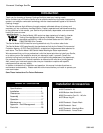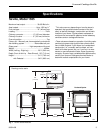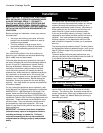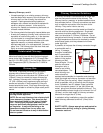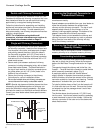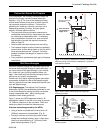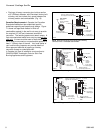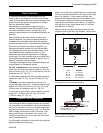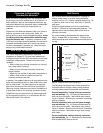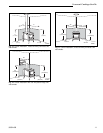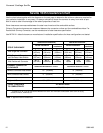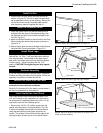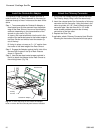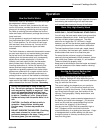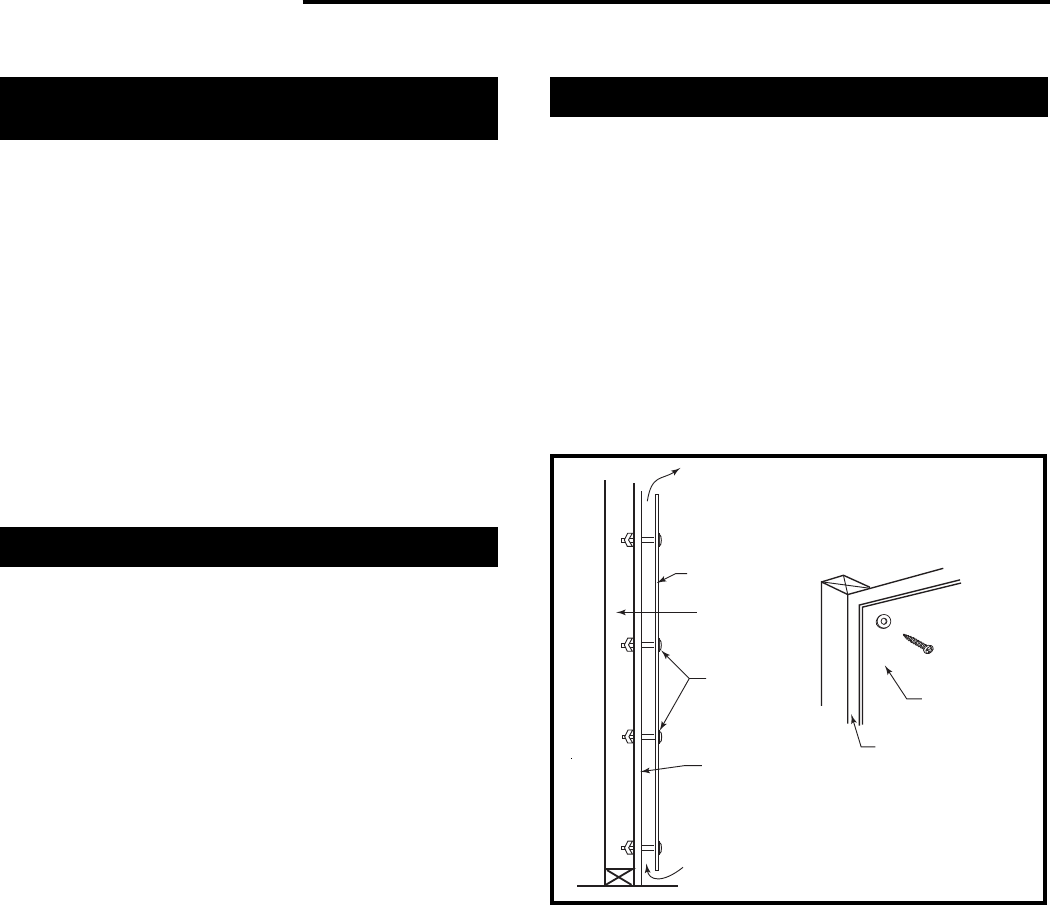
10
Vermont Castings Seville
30001490
Wall Shields
Wall shields should be constructed of 24 gauge or
heavier sheet metal, or another noncombustible
material such as 1/2" (13mm) insulation board (Fig. 14)
or common brick "laid on flat," with the 3¹⁄₂" (90mm)
side down.
Shields must be spaced out from the combustible
surface 1" (25mm) on noncombustible spacers. The
spacers should not be directly behind the stove or
chimney connector.
Air must be able to flow between the wall and the
shield. At least 50% of the bottom 1" (25mm) of the
shield should be open and the shield must be open at
the top.
The following examples of wall shield construction
illustrate common designs used to safely achieve
reduced clearances to combustible wall materials.
Parallel installation, vertical chimney connector,
two wall shields. Fig. 15: Reduced clearances for
both rear and side walls. Wall shields may meet at
corner if desired. Shielding for connector is centered
behind connector.
Parallel installation with rear wall pass-through,
two wall shields. Fig. 16: Reduced clearances for
both rear and side walls. Wall shields may meet at
corner if desired. Shielding for connector is centered
behind connector. Wall pass-through must comply
with codes.
Corner installation, vertical chimney connector,
two wall shields. Fig. 17: Reduced side clearances.
Wall shields MUST meet at corner.
Clearance to Surrounding
Combustible Materials
When the stove is operating, both the stoveplate and
the chimney connector radiate heat in all directions. A
safe installation requires that adequate clearance be
maintained between the stove and nearby combustible
materials to ensure that those materials do not
overheat.
Clearance is the distance between either your stove or
chimney connector, and nearby walls, floors, the
ceiling, and any other fixed combustible surface. Keep
furnishings and other combustible materials away
from the stove as well. In general, a distance of 48"
(1220 mm) must be maintained between the stove and
moveable combustible items such as drying clothes,
furniture, newspapers, firewood, etc. Keep this area
empty of any combustible material.
Safe Ways To Reduce Clearances
The Seville clearance requirements, listed and
diagramed on Pages 12-13, have been established
through testing to UL and ULC standards to meet most
installation configurations. These involve four basic
variables:
• When neither the
chimney connector nor the wall
has a heat shield
installed.
• When only the
chimney connector has a heat
shield
installed.
• When only the
wall has a heat shield
mounted on it.
• When a heat shield is installed on
both the
chimney connector and wall.
In general, the greatest clearance is required when the
stove will be positioned with no heat shield near a wall
with no heat shield. The least clearance is required
when both the stove and the wall have heat shields.
Reducing a stove clearance may require installation of
a listed heat shield on the chimney connector as well.
Clearances may be reduced only by means approved
by the regulatory authority, or in accordance with the
clearances listed in this manual.
Fig. 14 Approved Wall shield construction
Air flow
Wall shield
Air flow
Stud wall
framing
Noncombustible
spacers and
fasteners
Drywall
Metal Spacer
Shield
ST248



